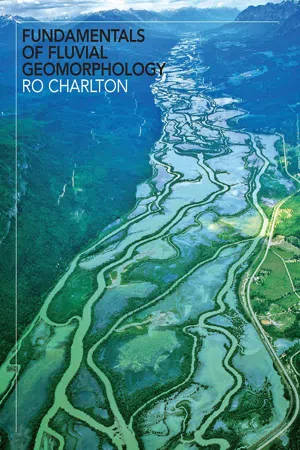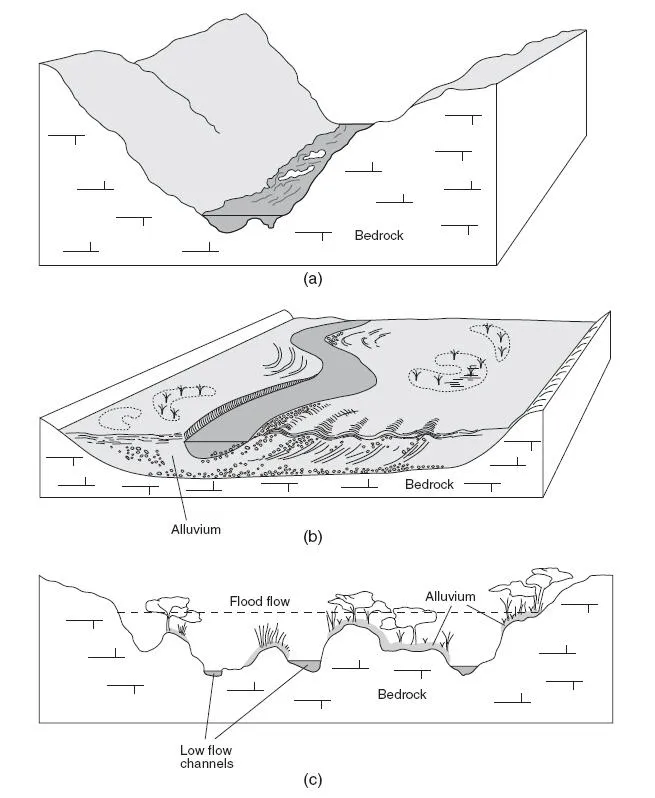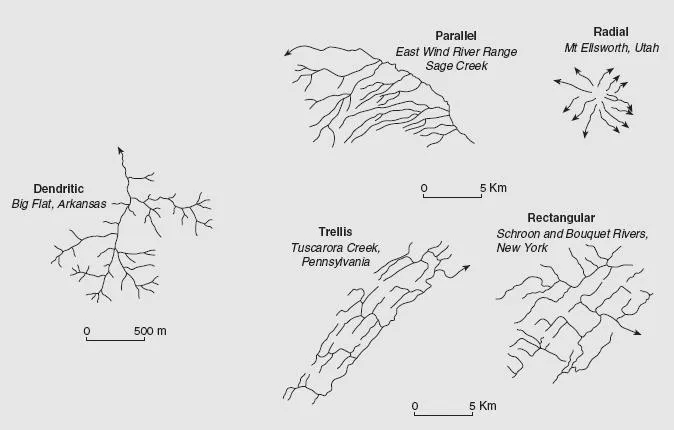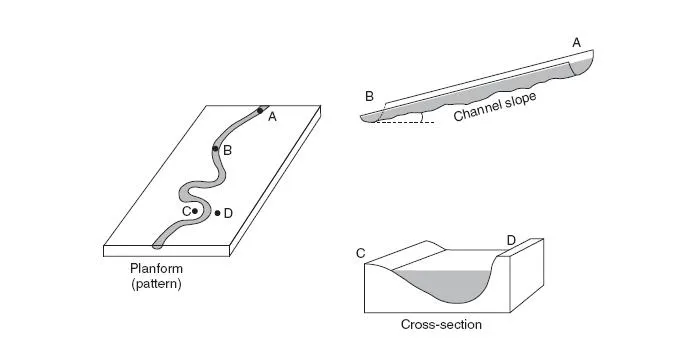
- 256 pages
- English
- ePUB (mobile friendly)
- Available on iOS & Android
Fundamentals of Fluvial Geomorphology
About This Book
Rivers are significant geomorphological agents, they show an amazing diversity of form and behaviour and transfer water and sediment from the land surface to the oceans. This book examines how river systems respond to environmental change and why this understanding is needed for successful river management. Highly dynamic in nature, river channels adjust and evolve over timescales that range from hours to tens of thousands of years or more, and are found in a wide range of environments.
This book provides a comprehensive overview of recent developments in river channel management, clearly illustrating why an understanding of fluvial geomorphology is vital in channel preservation, environmentally sensitive design and the restoration of degraded river channels.
It covers:
- flow and sediment regimes: flow generation; flow regimes; sediment sources, transfer and yield
- channel processes: flow characteristics; processes of erosion and sediment transport; interactions between flow and the channel boundary; deposition
- channel form and behaviour: controls on channel form; channel adjustments; floodplain development; form and behaviour of alluvial and bedrock channels
- response to change: how channels have responded to past environmental change; impacts of human activity; reconstructing past changes
- river management: the fluvial hydrosystem; environmental degradation; environmentally sensitive engineering techniques; river restoration; the role of the fluvial geomorphologist.
Fundamentals of Fluvial Geomorphology is an indispensable text for undergraduate students. It provides straightforward explanations for important concepts and mathematical formulae, backed up with conceptual diagrams and appropriate examples from around the world to show what they actually mean and why they are important. A colour plate section also shows spectacular examples of fluvial diversity.
Frequently asked questions
Information
1
INTRODUCTION
The term fluvial is derived from the Latin fluvius, meaning river. Fluvial geomorphology is the study of the interactions between river channel forms and processes at a range of space and time scales. The influence of past events is also significant in explaining the present form of river channels. Rivers are found in many different environments and show an amazing diversity of form. In this chapter you will learn about:
- The different scales at which rivers are examined.
- How the form of a river channel is determined by the balance between the physical force acting on the material forming the channel and the resistance of that material to being moved.
- The way in which local environmental factors interact with these hydraulic forces to produce a wide variety of channel forms.
DIVERSITY OF FORM
A quick look through the photographs in this book will give you some idea of the variety that can be seen in rivers and streams worldwide. Rivers drain much of the land area – with the exception of regions that are hyper-arid or permanently frozen – and their variety reflects the vast range of different environments in which they are found. Climate, geology, vegetation cover and topography are just some of the factors that influence river systems.


Box 1.1
DRAINAGE NETWORK PATTERNS
Water and sediment are transported from the hillslopes to the basin outlet via the drainage network. The shape and density (length of stream channel per unit area) of drainage networks varies considerably, and no two are the same. Figure 1 provides some typical examples of selected drainage patterns. A major control on drainage network morphology is the underlying geology, although topography, soils, tectonic history and climate are also influential. Dendritic drainage networks, which have a random pattern, are found where there are no strong geological controls. Where there is a strong regional dip (slope), parallel drainage patterns develop. Trellis networks are also associated with regional dip, although in this case structural controls are also important; for example, where lines of weakness are provided by well developed joints running at right angles to the dip. Where two sets of structural controls run at right angles to each other, a rectangular pattern develops. Trellis and rectangular networks may also be found where there are alternating bands of hard and soft strata. Radial drainage develops as result of symmetrical erosion around uplifted domes and volcanoes. Although drainage patterns are used in the interpretations of tectonic influences and underlying structural controls, there may not always be a close correspondence. During their long term history, rivers cut down through great thickness of rock, and former drainage patterns are sometimes preserved.

HOW RIVERS SHAPE THEIR
CHANNELS
Rivers and streams continuously shape and reform their channels through erosion of the channel boundary (bed and banks) and the reworking and deposition of sediments. For example, erosion and undermining of the banks can lead to channel widening. Scouring of the channel bed deepens the channel, while sediment deposition reduces the depth and can lead to the formation of channel bars. These are just some of the ways in which channel adjustment takes place.

Table of contents
- COVER PAGE
- TITLE PAGE
- COPYRIGHT PAGE
- LIST OF FIGURES
- LIST OF BOXES
- LIST OF PLATES
- LIST OF COLOUR PLATES
- AIMS AND SCOPE OF THE BOOK
- ACKNOWLEDGEMENTS
- 1. INTRODUCTION
- 2. THE FLUVIAL SYSTEM
- 3. THE FLOW REGIME
- 4. SEDIMENT SOURCES
- 5. LARGE-SCALE SEDIMENT TRANSFER
- 6. FLOW IN CHANNELS
- 7. PROCESSES OF EROSION, TRANSPORT AND DEPOSITIÓN
- 8. CHANNEL FORM AND BEHAVIOUR
- 9. SYSTEM RESPONSE TO CHANGE
- 10. MANAGING RIVER CHANNELS
- NOTES
- GLOSSARY OF TERMS
- REFERENCES